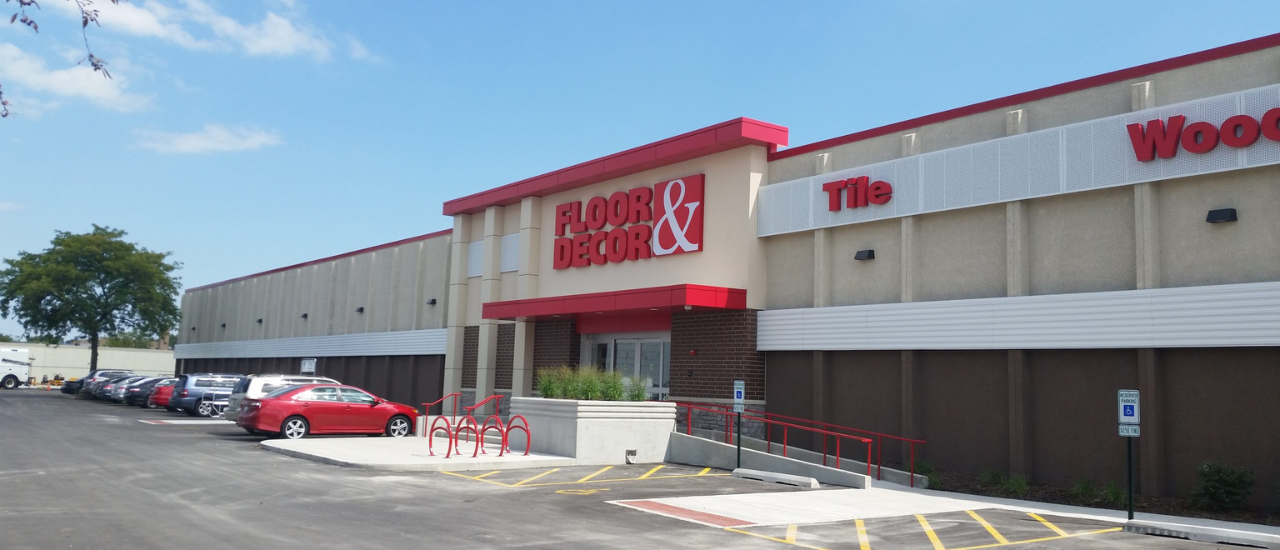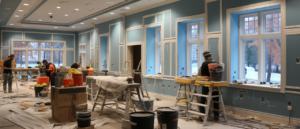Chicago, seen as a city with a strong industrial past, has many old factories, warehouses, and industrial buildings that have been important to the city’s economic history. The years have passed, some of these spaces have been abandoned, and industries have changed and developed new, modern buildings. Instead of tearing them down, more and more businesses are remodeling them for new purposes. The trend of industrial remodeling in Chicago is becoming more common, for good reasons. Retrofitting preserves the structure’s historical architecture while providing multiple benefits to the business owners, the developer, and the community.
Why Retrofitting Old Industrial Buildings in Chicago Makes Sense
1. Preserving Historical Charm and Architecture
The biggest benefit of retrofitting Chicago’s old industrial buildings is being able to keep their historical elegance and architectural integrity. Most Chicago industrial buildings have their distinct brick facades, high ceilings, large windows, and characteristic designs that distinguish them. By using Commercial Wallpaper Services in Chicago, companies can maintain these architectural features while adapting to the requirements for contemporary usage. This not only preserves the cultural heritage of the city but also generates a unique environment that is different from the rest in the contemporary real estate market.
2. Cost Savings and Sustainability
Demolishing existing industrial buildings and constructing new ones can be costly from both financial and environmental standpoints. Industrial remodeling in Chicago provides a cost-effective option. Instead of starting anew, retrofitting allows organizations to reuse existing structures and materials, thereby saving on construction costs.
Retrofitting is also more environmentally friendly. By reusing materials, the impact of demolition on the environment is lessened, and installing new and modern upgrades, such as energy-efficient and HVAC systems, LED lighting, and insulation, also lowers the carbon footprint of the building for the benefit of the environment and the bottom line.
3. Meeting Modern Needs with Updated Infrastructure
Older industrial buildings often come with missing infrastructure for today’s businesses. Chicago commercial remodeling services enable developers to fit these buildings with new electrical systems, better insulation, and advanced technologies. This makes them more attractive to a wider variety of businesses.
Old industrial buildings with broad floor plans and lofty ceilings are particularly ideal for businesses that require open spaces — tech startups or creative agencies, for instance. Retrofitting may also allow for inclusion of modern HVAC systems, fire safety enhancements and better lighting that qualify for today’s standards of comfort, safety and energy efficiency.
4. Creating Unique Commercial Spaces
Retrofitted industrial buildings provide a combination of old-world charm and contemporary functionality. Most companies opt for commercial remodeling services in Chicago since these structures are different from standard office buildings. Exposed brick, steel beams, and large windows, for instance, can be retained alongside modern technologies and design.
So, when you use it for an office space, retail, or mixed-use developments, retrofitting results in distinctive properties that entice businesses, customers, and tenants. They promote creativity and innovation, providing a unique setting that inspires employees.
5. Enhancing Property Value and Revitalizing Neighborhoods
Retrofitting old industrial buildings in Chicago increases property values, not just for the building but for the neighborhood as well. Warehouse development in Chicago serves to revitalize Chicago’s historically industrial neighborhoods and convert them into thriving centers of activity. As these neighborhoods become more desirable locations to work and reside, property values increase, benefitting developers and the local community.
Retrofitting is vital for more than just commercial reinvestment; it’s crucial for realizing the caliber of neighborhood reinvestment as well, especially in neighborhoods experiencing commercial blight. Developers revitalize these communities by transforming obsolete industrial structures into modern commercial facilities, bringing jobs and a business stimulus.
6. Faster Project Completion
When you choose industrial remodeling in Chicago, the retrofitting of an existing old industrial building is usually faster than constructing a new building. The structure already exists, so developers can spend their time renovating the infrastructure and making the required changes. With the reduced construction duration, companies get to enter their new facility sooner, minimizing downtime and enabling them to begin operations earlier. This is particularly useful for companies wishing to expand or relocate and must become operational without lengthy delays.
The Bottom Line: A Smart Investment
In conclusion, retrofitting old Office and Building Remodeling Chicago for new use is a wise and eco-friendly option for businesses and developers. By choosing warehouse renovation or commercial remodeling solutions, businesses can save on costs, be sustainable, and acquire functional spaces that meet today’s demands. This strategy also conserves Chicago’s rich industrial heritage, promotes neighborhood renewal, and adds to the city’s unique identity.
For those planning industrial or warehouse renovations, retrofitting is a strong option for combining the new and old into spaces that are good for businesses and the community. With L&M Decorating, we restore and maximize your property to its highest capability. Contact us today at (312) 687-8707 or online for additional information. Let us assist in transforming your business area!




